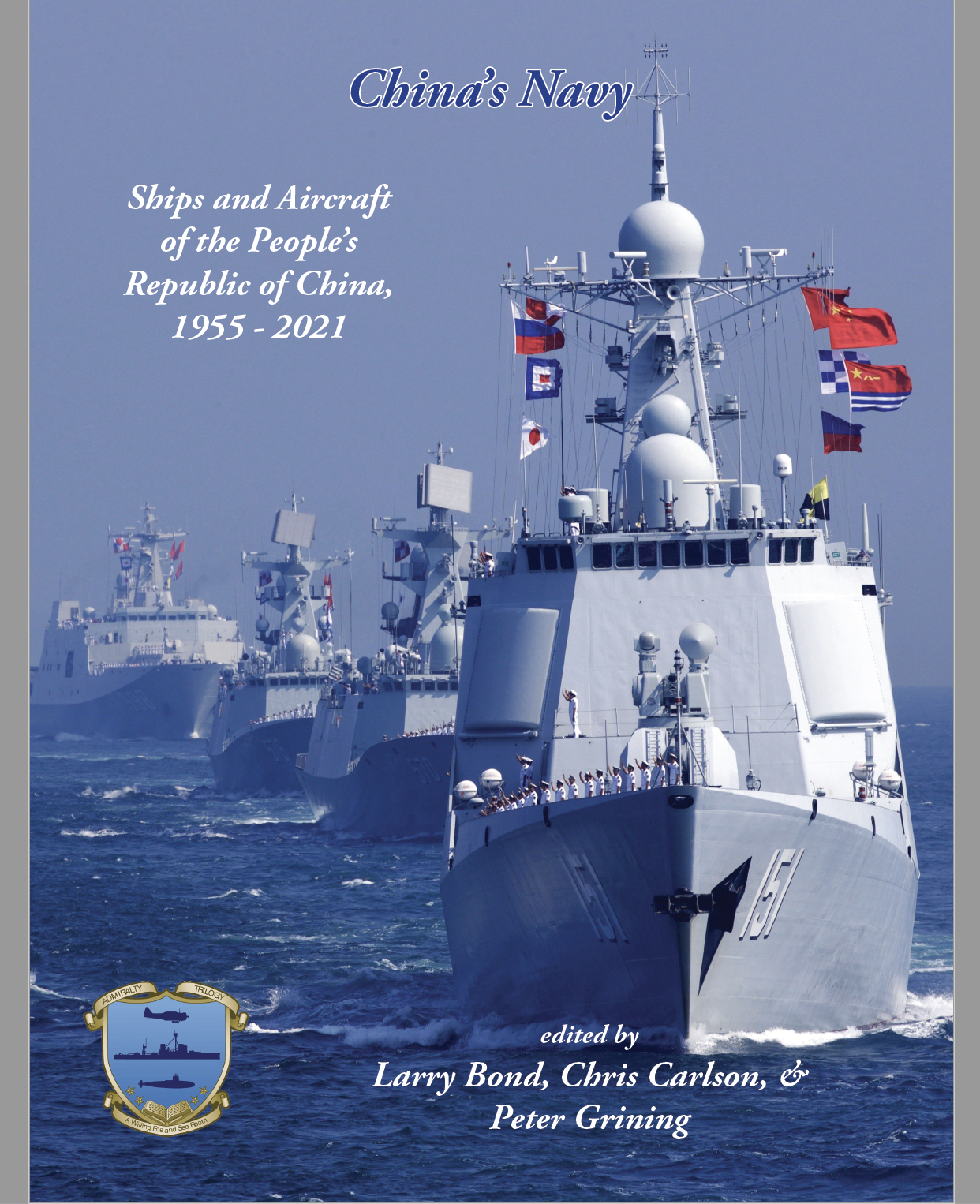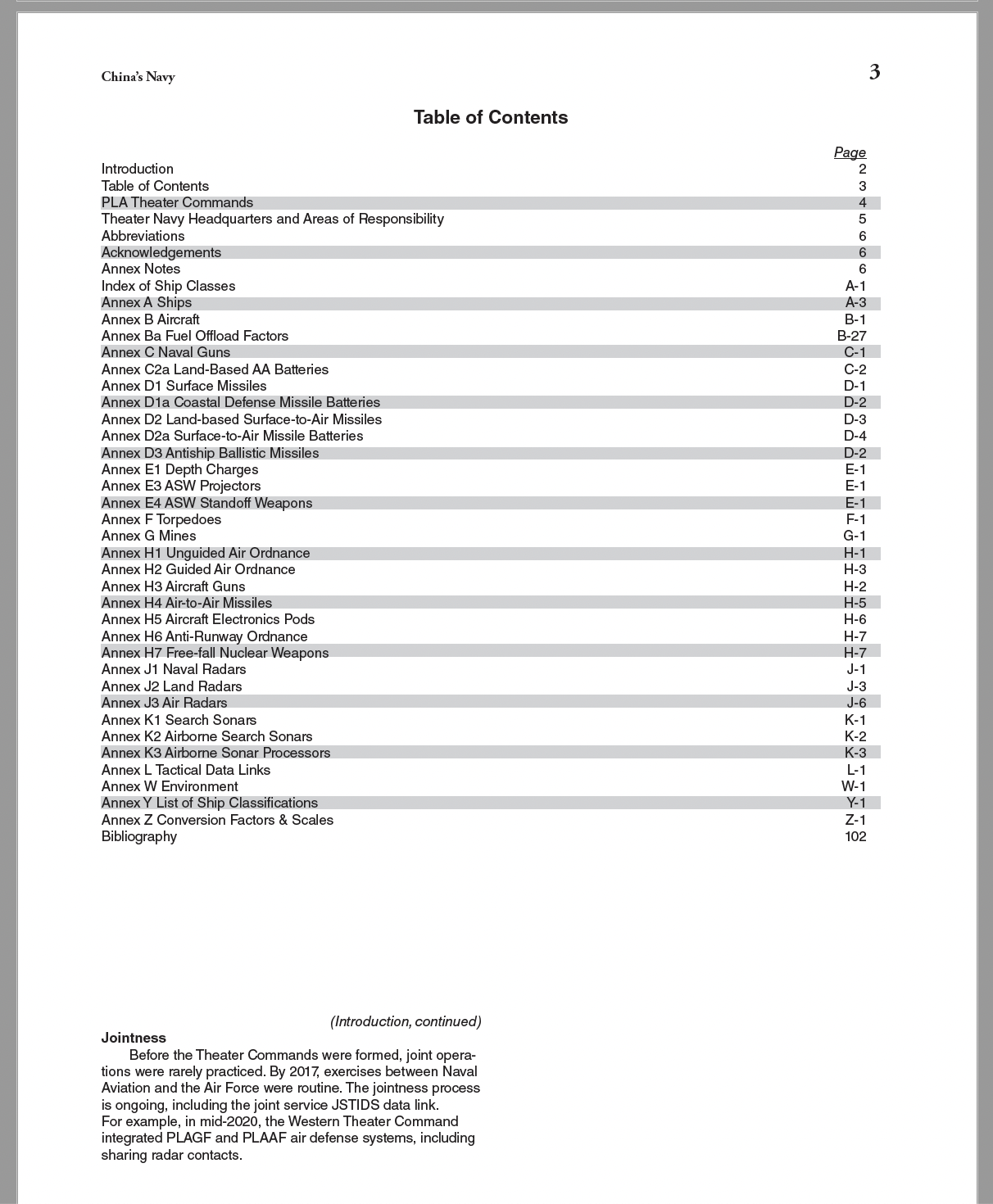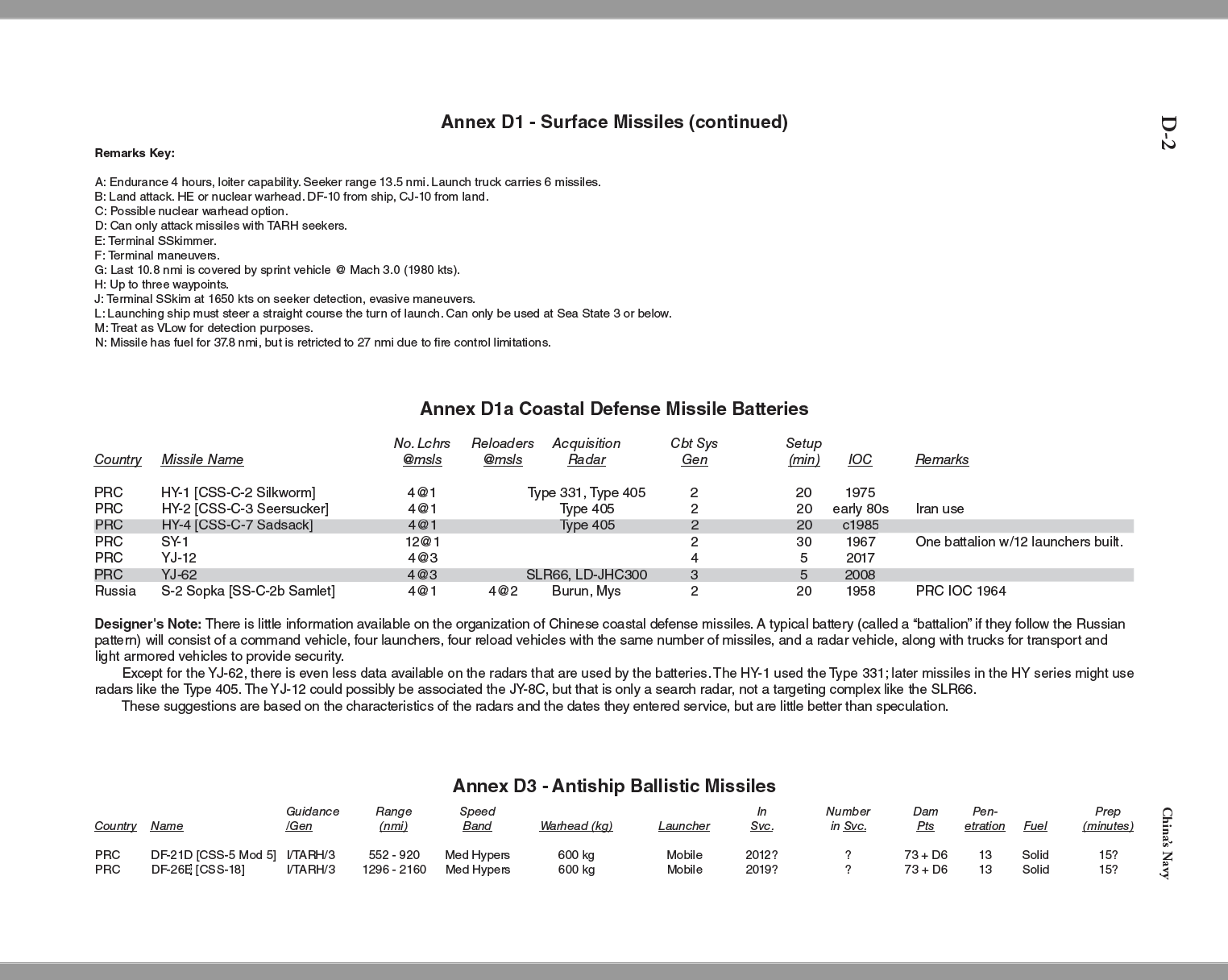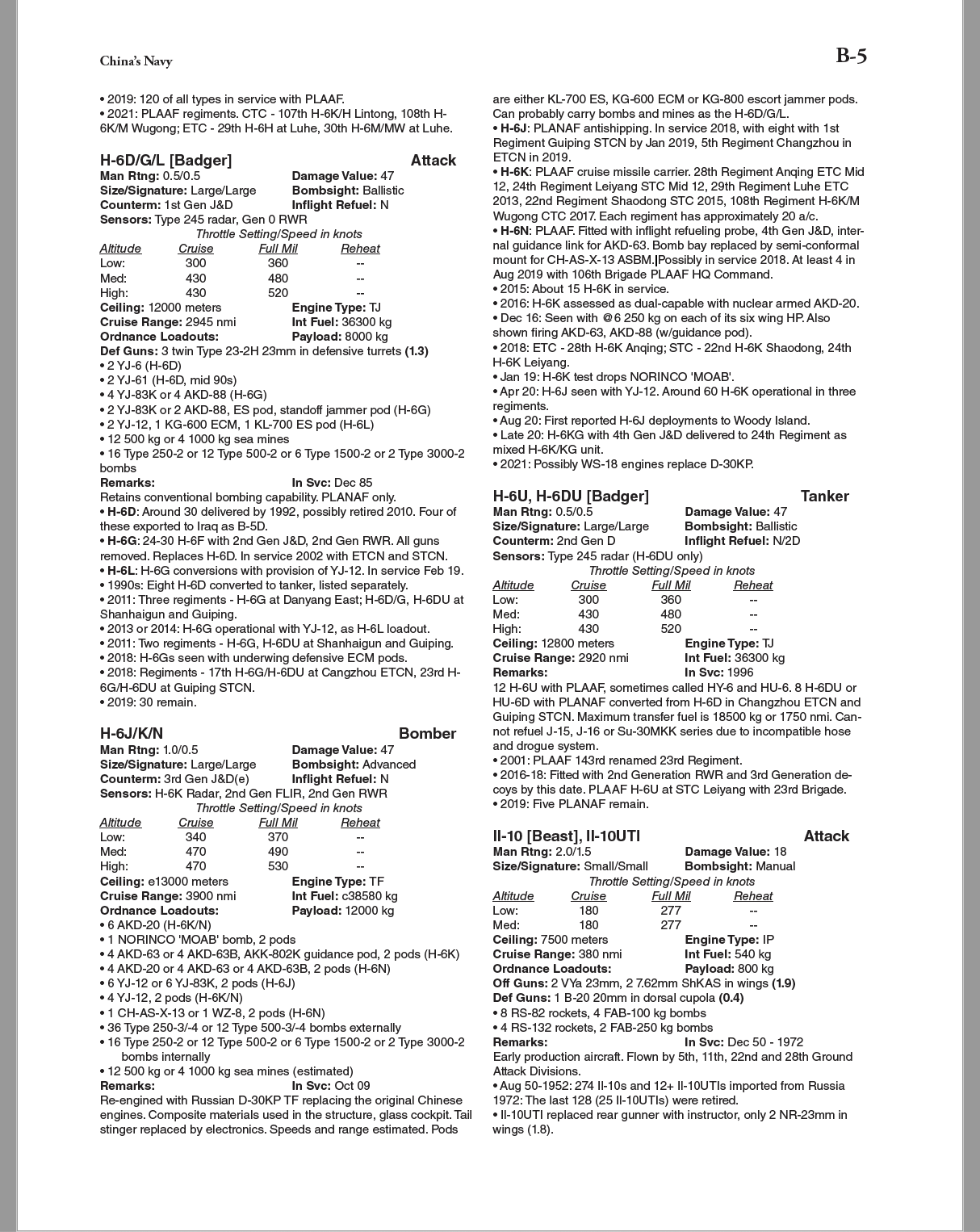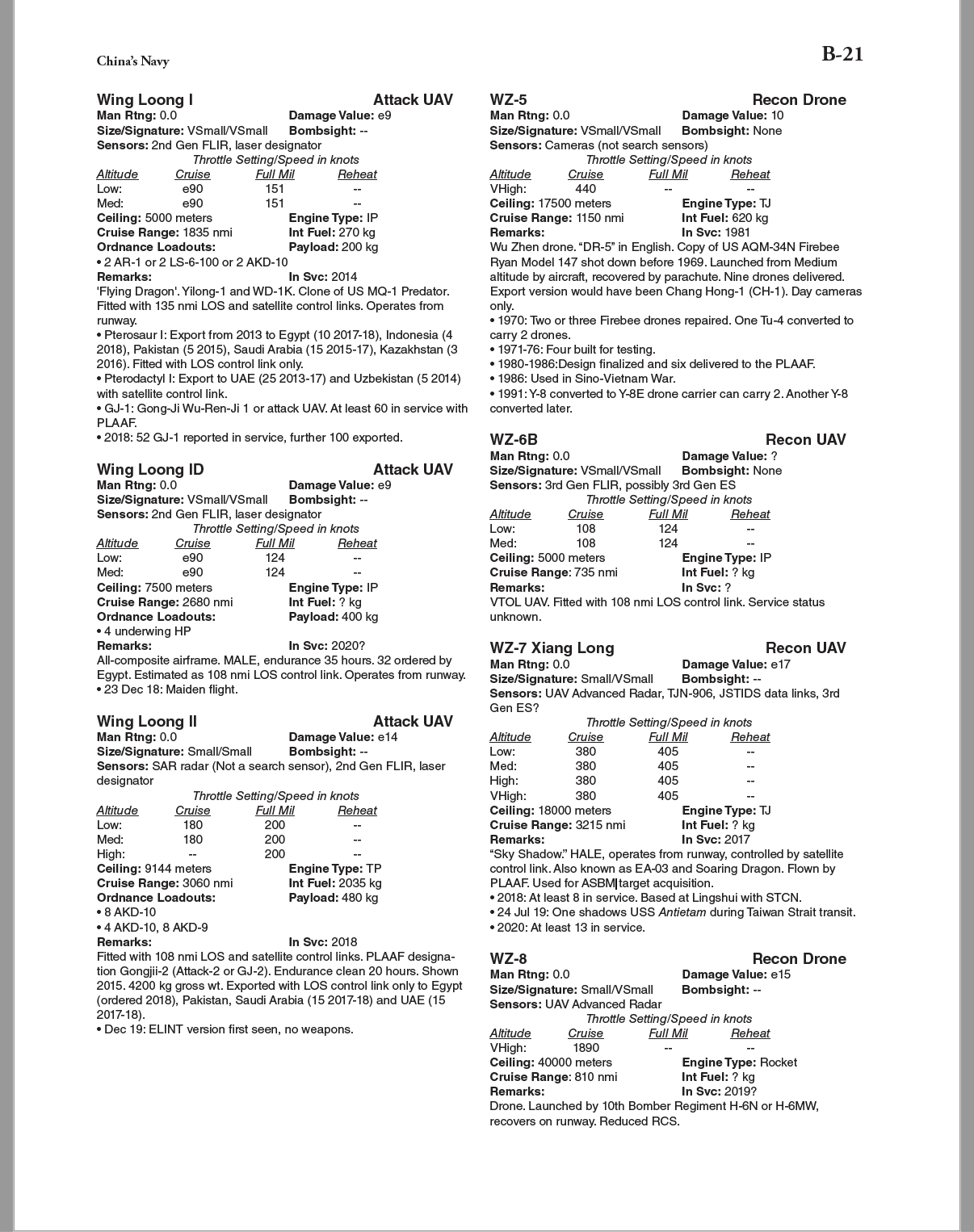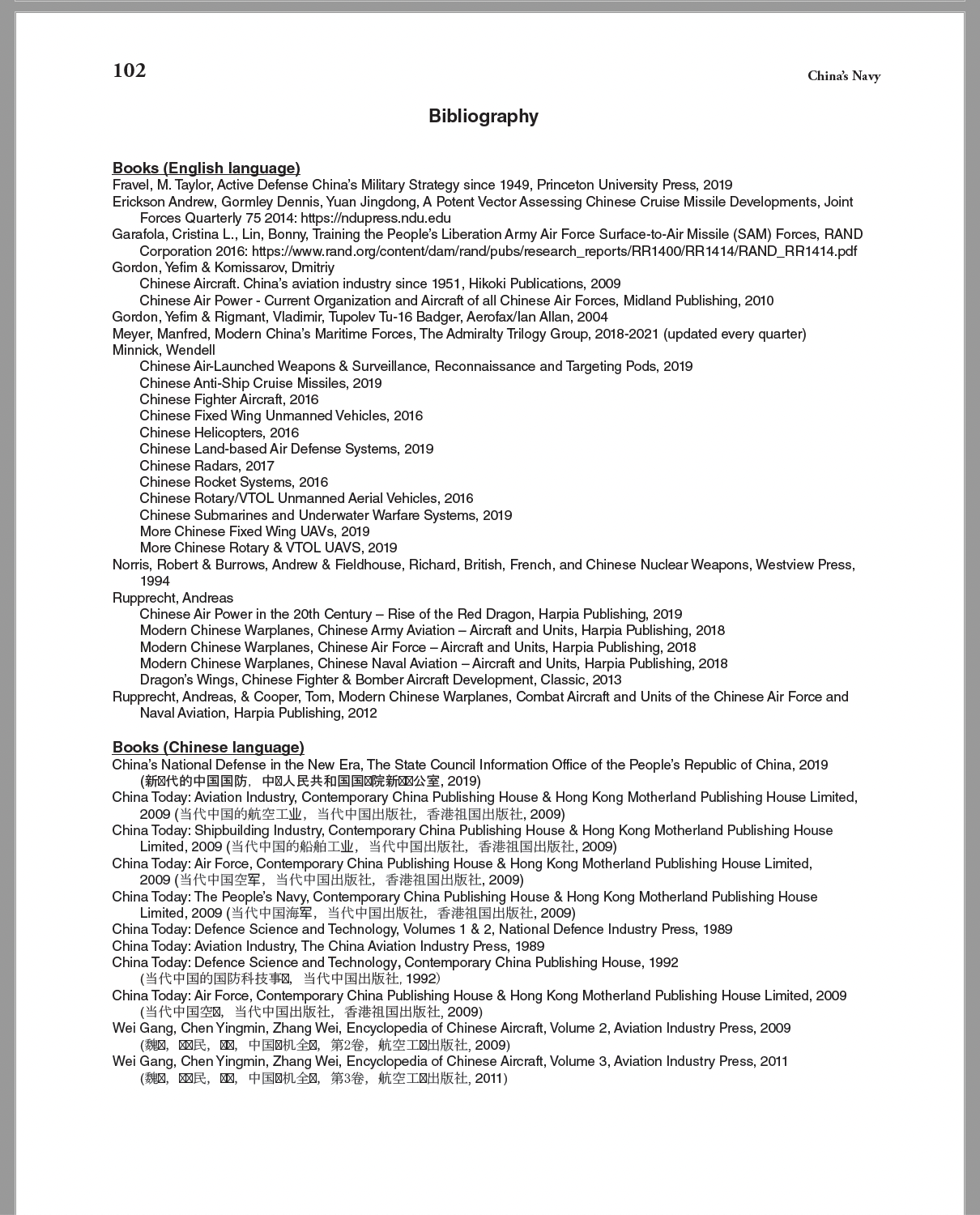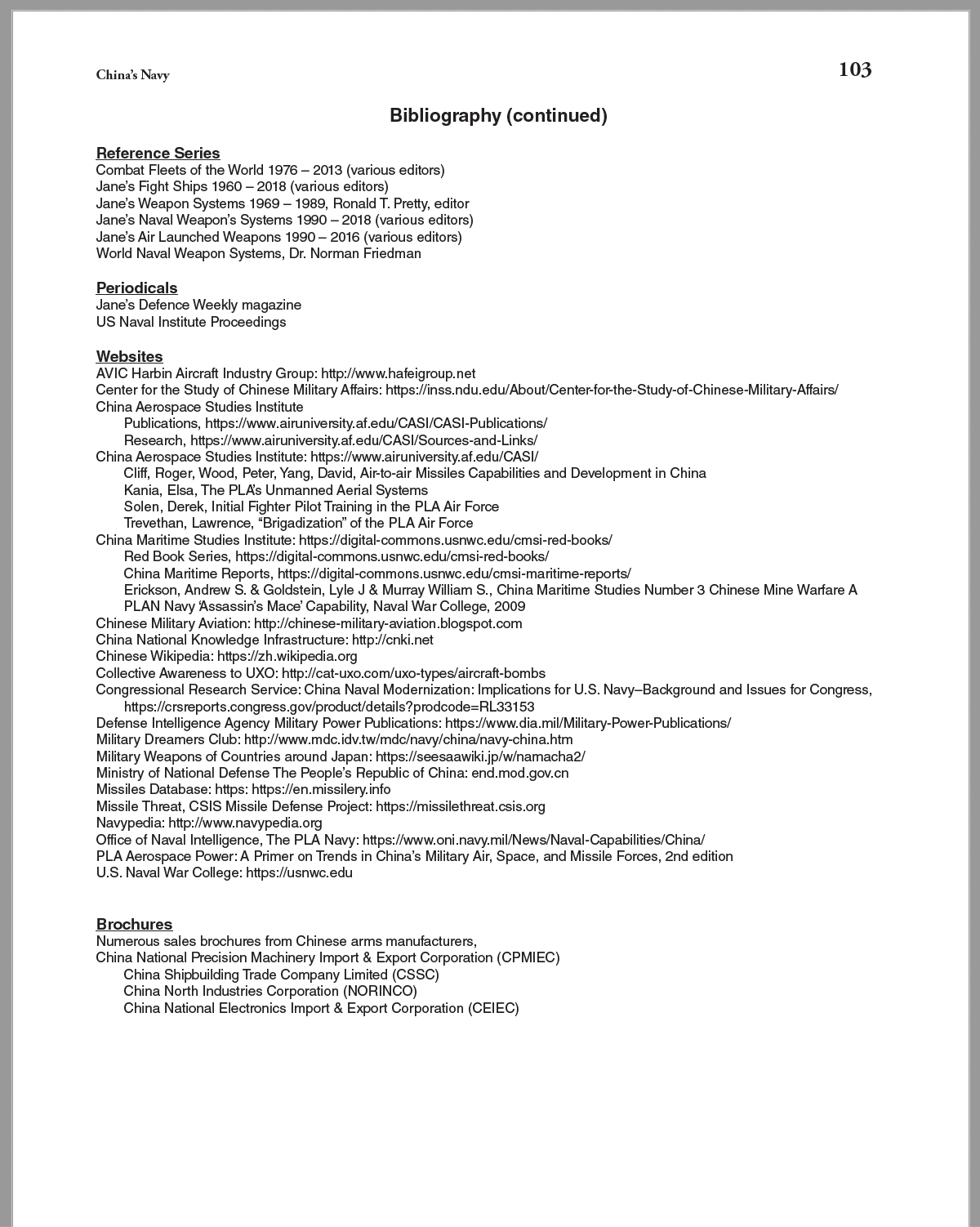Unique Order of Battle!—China’s Navy: Ships & Aircraft of the PRC, 1955–2021
A comprehensive compendium of PLAN, PLAAF, CCG ships & aircraft + missiles/weapons & sensors from 1955 to present, as you’ve never seen them before… Consult this unparalleled unclassified reference for analysis or gaming today!
Larry Bond, Chris Carlson, and Peter Grining, eds., China’s Navy: Ships and Aircraft of the People’s Republic of China, 1955 – 2021 (Admiralty Trilogy Group, 1 October 2021).
China’s Navy lists the ships and aircraft used by the People’s Liberation Army Navy and Air Force and Chinese Coast Guard, in service between 1955 and the present day. It is designed as a sourcebook for Harpoon, fifth edition, but it can also be used as a general reference. Organized as a collection of annexes, Annexes A and B provide statistics on ships and aircraft respectively as first built, and any modifications over time, sometimes many times. Annexes C and on give detailed weapons and sensors characteristics, including guns, missiles, antisubmarine weapons, torpedoes, mines, airborne ordnance, radars, sonars, and data links, with all the information needed to use them in a Harpoon scenario.
The book also provides information on land-based surface-to-air missiles and coastal defense missiles and their battery organization. Supplemental annexes list ship classifications and factors used to convert weapons and sensor information into game data.
Information cutoff date 1 October 2021
Copyright © 2021 by Admiralty Trilogy Group, LLC
All rights reserved. Printed in the USA. Made in the USA.
No part of this game may be reproduced or used in any form or by any means without permission in writing from the publisher.
Harpoon is a registered Trademark by Larry Bond and Christopher Carlson for their modern tactical naval wargame. The Admiralty Trilogy is a registered Trademark by Larry Bond, Christopher Carlson, Edward Kettler, and Michael Harris for their nineteenth-, twentieth-, and twenty-first-century tactical naval gaming system.
The editors of China’s Navy are prepared to answer questions about the supplement. They can be reached in care of adtrgroup@aol.com. Visit their website at www.admiraltytrilogy.com.
Acknowledgements: Thanks to Jim Baker, Chang Lei, Pat Hreachmack, Christoph Kluxen, Kevin Martell, Alex Ramos, Dave Schueler, and Steve Thorne for their support and valuable feedback.
Special thanks to Dr. Andrew Erickson and Ryan Martinson for guidance.
The 2012 Damage Point Standard: China’s Navy uses the “2012 Standard” to calculate a ship’s damage points. This method, described in the April 2012 issue of the Naval SITREP (hence the name) matches historical results more closely than the older “2006 Standard” used in older ATG products.
If you are using ship data from more than one Admiralty Trilogy publication, make sure that the damage points have all been calculated using the 2012 Standard.
Annex Notes: The information on the platforms, weapons, and sensors in this annex has been standardized so that it is compatible and consistent with all Admiralty Trilogy games. Equipment that was used in more than one era will have the same statistics in all games. Information in this Annex is compatible with Harpoon 5th edition.
The Annex designations are standardized for all four Admiralty Trilogy games: Dawn of the Battleship, Fear God & Dread Nought, Command at Sea, and Harpoon. Gaps in the sequence are caused by annexes that are not applicable to that era or product.
If there is information in another Trilogy publication that conflicts with the data printed here, use the information in the product with the newest publication date, since new information and corrections can change statistics. If you have a question about the conflict, or about any other data listed, please contact us.
Except for Annex A, systems are listed in their annexes alphabetically, first by country, then by name. The ships in Annex A are listed in traditional order, with aircraft carriers first, then submarines, followed by major combatants, minor combatants, amphibious ships, mine warfare craft, auxiliaries, then civilian vessels. An alphabetical list of ships by class name is provided, beginning on the next page. The aircraft in Annex B are listed in alphabetical order.
Systems listed in italics never entered service. They existed only as hypothetical designs, in prototype or developmental form. Ships with a year in parentheses following their name have been radically altered since they entered service, and were operational in their new configuration in the listed year.

